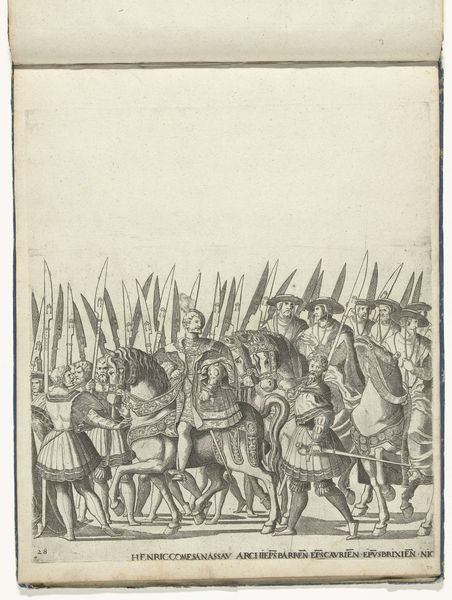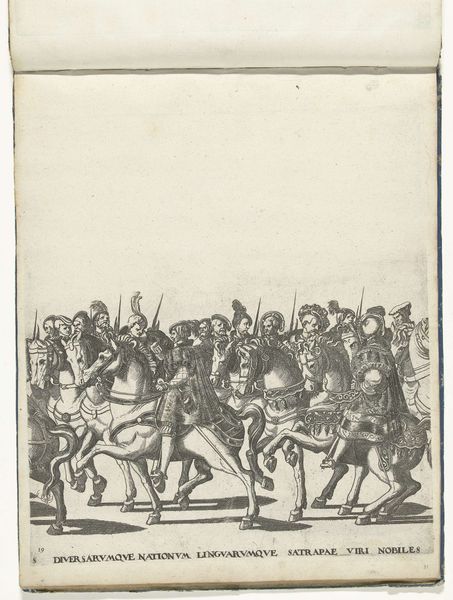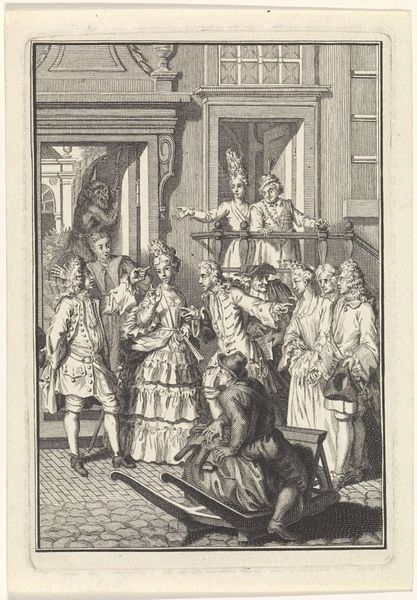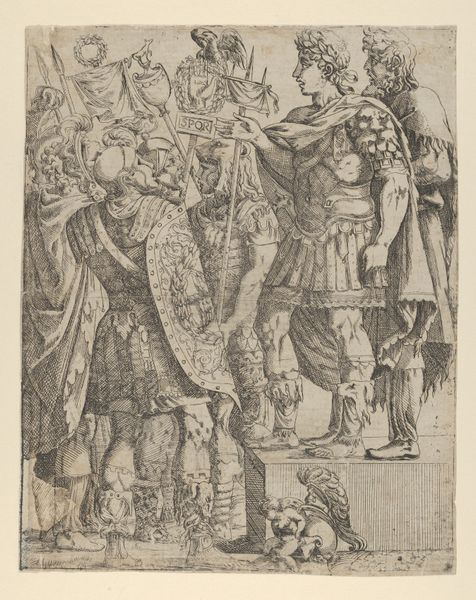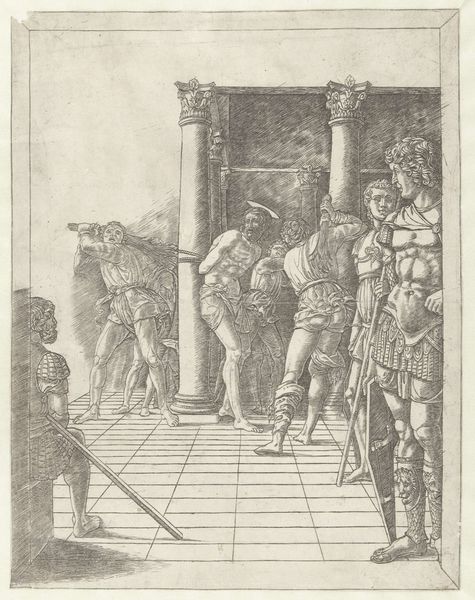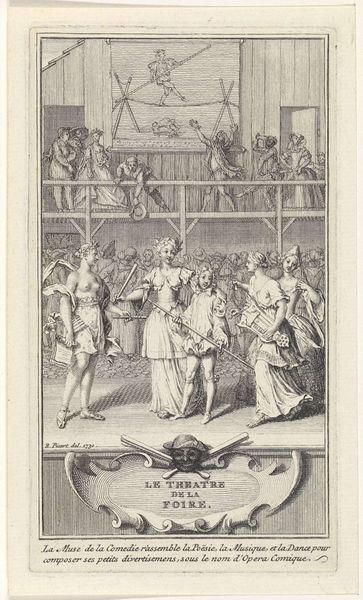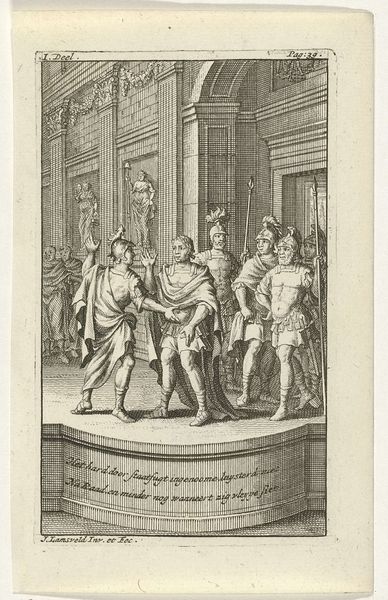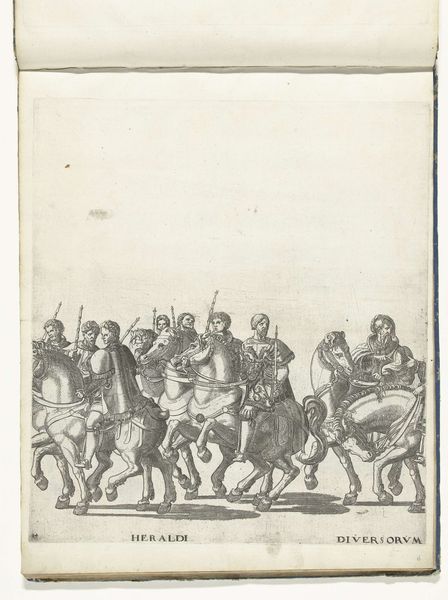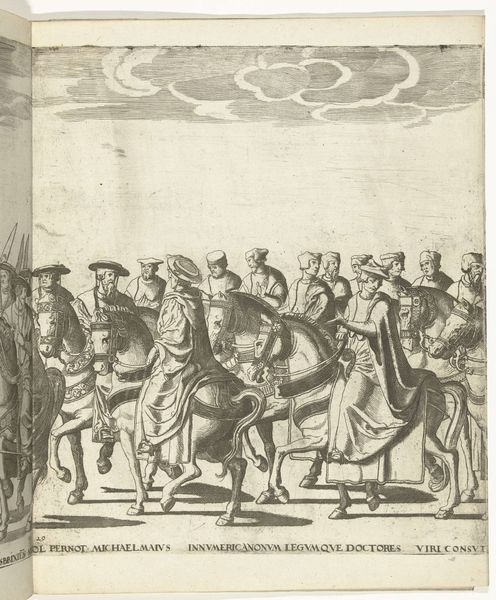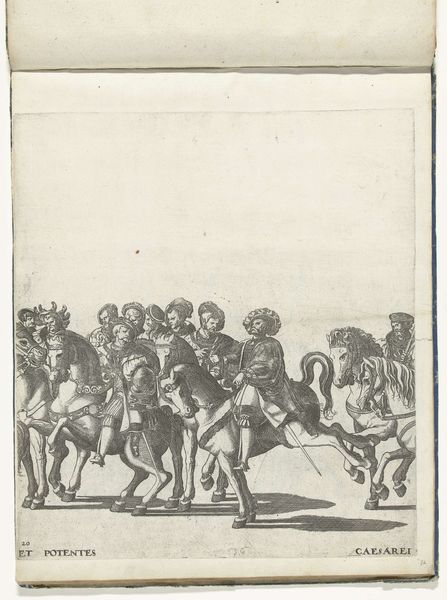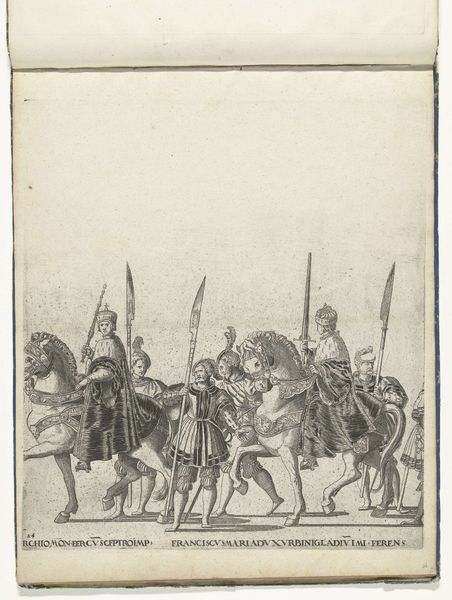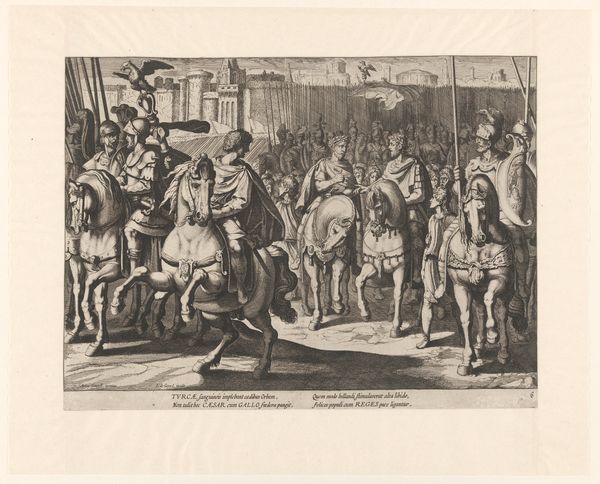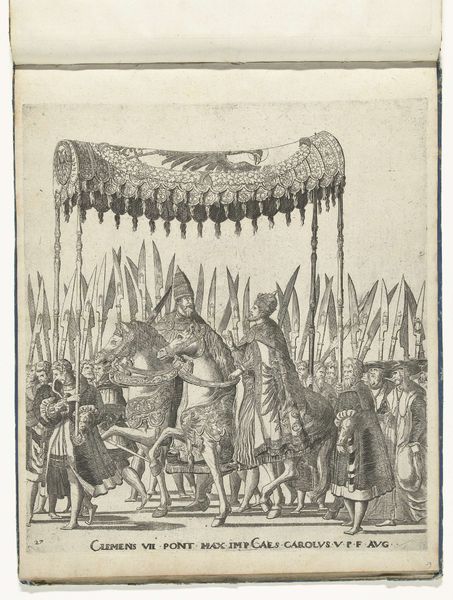
print, pen, engraving
#
aged paper
#
medieval
#
mechanical pen drawing
# print
#
old engraving style
#
landscape
#
figuration
#
personal sketchbook
#
pen-ink sketch
#
pen and pencil
#
line
#
pen work
#
sketchbook drawing
#
pen
#
history-painting
#
storyboard and sketchbook work
#
northern-renaissance
#
sketchbook art
#
engraving
Dimensions: height 330 mm, width 300 mm
Copyright: Rijks Museum: Open Domain
Curator: Today, we are looking at a piece attributed to Nicolaas Hogenberg titled “Landsknechten, plaat 33,” likely created sometime between 1530 and 1620. It’s an engraving, seemingly part of a sketchbook, rendered in pen and ink. Editor: Immediately, I’m struck by the bristling energy. It feels very controlled, almost regimented, despite being a seemingly quick sketch. The ranks of lances create a strong, almost oppressive, visual field. Curator: That feeling is quite fitting, given that the Landsknechte were mercenary soldiers, a significant, if often brutal, force in 16th-century Europe. Hogenberg, working in the context of the Northern Renaissance, often captured scenes of political and social life. I’d argue this piece gives us a peek into the visual culture of military power during that time. Editor: The repetition of forms—the lances, the helmets, even the horses—definitely underscores that power. It’s almost architectural. There’s something iconic in the way they’re presented; the plumes on the helmets, for instance, could almost be symbolic markers of rank or allegiance, like heraldic devices. Do you notice how small and subservient those on foot at the end appear. Curator: Absolutely. And it’s fascinating how this work circulates, reproduced as a print. The ability to disseminate these images was crucial to constructing reputations of both individual figures and of institutions like the military, a form of proto-propaganda if you will. Also to be considered is that they would be purchased as souvenir by visiting nobleman to keep. Editor: So, an image serving as both propaganda and souvenir, embedding its message deeply within the cultural memory. Those figures on horseback become archetypes. Thinking about how this was likely kept within a personal sketchbook only emphasizes its original emotional potency as a quick sketch. Curator: Yes. It speaks volumes about how art played a critical role in defining identity, ambition and legacy during the period. Editor: Looking at it now, I understand a little more about the complicated realities of those times. Curator: Indeed. And it demonstrates how an artwork like this can function on many different social and political levels, all the while continuing to have visual, evocative impact for a viewer today.
Comments
No comments
Be the first to comment and join the conversation on the ultimate creative platform.

